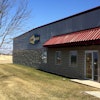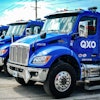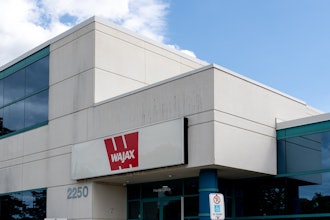
Economists and a number of business executives had been holding their collective breaths in fear of Q2 earnings reports at the possibility the U.S. would slide into a major recession and industrial sales would drop off. That certainly doesn’t appear to be the case, according to Q2 earnings reports and transcripts of earnings calls from several large industrial distributors that reported strong sales and a fairly optimistic outlook for the remainder of 2022.
Huge MRO distributor Grainger, for example, reported a very strong quarter with sales of $3.84 billion, an increase of nearly 20% year-over-year, along with a quarterly net profit of $371 million, a 65% increase. Q2 sales for the distributor’s online Zoro unit grew by 23%.
As a result of all the good news, the company raised its outlook for the year, causing its stock to skyrocket.
Dee Merriwether, Grainger’s senior vice president and CFO, told financial analysts that the company acknowledges that broader market conditions remain uncertain but the company has not seen a slowdown in demand and they “continue to hear positive sentiment from our customers, further supporting our revised outlook.”
Grainger’s updated outlook for the full year 2022 includes expected daily sales growth between 14.5% and 16.5%, and EPS between $27.25 and $28.75, a 41% increase year-over-year at the midpoint. Daily sales for Grainger were up 22.2% compared to the second quarter of 2021.
“We saw broad-based double-digit growth across all geographies and over 20% growth in both midsized and large customers in the U.S.,“ Merriwether said. Canadian daily sales were also strong, up 15.5% in local currency. “It’s been a long journey, and we are proud of the traction the Canadian team has gained with their now fifth consecutive quarter of profitability,” she added.
And the company sees good news ahead for the MRO market. Grainger, with 4.5 million customers worldwide, recorded 2021 sales of $13.5 billion. The company is now raising its sales forecast for 2022 to be between $15 billion to $15.2 billion, up from Q1’s earlier forecast of $14.5 billion to $14.9 billion.
D.G. Macpherson, Grainger’s chairman and CEO, told analysts that health care and government are still growing but those markets are not as strong as general manufacturing. He pointed out the industrial parts of the economy are growing faster for Grainger than non-industrial parts.
Meaningful Impacts
Meanwhile, Fastenal, the large industrial distributor headquartered in Minnesota, reported that its sales grew a solid 18% in Q2. While demand is generally healthy, said CEO and President Dan Florness, there were some signs of softening market conditions in May and June.
Florness said that softening has occurred in sectors such as automotive, recreational vehicles and markets that have a more direct connection to the consumer. Daily sales to Fastenal’s manufacturing customers increased 23.1% in the second quarter of 2022 from the second quarter of 2021. Daily sales to its non-residential construction customers increased 10.8% in the second quarter of 2022 from the second quarter of 2021.
Sales trends for the company’s traditional manufacturing and construction customers reflected sustained strength in underlying economic activity as well as favorable product pricing. Meanwhile, Paul Donahue, chairman and CEO of Genuine Parts Company, said the Purchasing Manager’s Index (PMI) continues to signal manufacturer expansion and industrial production gains again in the second quarter, representing the eighth consecutive quarter of growth.
Another reason for the optimistic outlook by GPC was last December’s purchase of the Kaman Distribution Group by Motion, the industrial segment of GPC. Motion acquired the distributor of highly engineered products and provider of related services from Littlejohn & Co., LLC for $1.3 billion in cash.
Motion has been on a tear and acquired more than 20 companies in the past 15 years, greatly expanding its offerings from power transmission to general industrial supply, hose and accessories, automation, fluid power and a number of other product areas. And Motion indicated they are looking at other possible acquisition candidates.
The accelerated integration of Kaman has been executed with a “high degree of precision and has had a meaningful impact on our industrial performance,” Donahue said. Will Stengel, president of GPC, said Motion successfully integrated KDG associates to its HR programs, accelerated the realignment of functional support teams, integrated systems, and accelerated the co-location of overlapping branches.
In addition, Motion partnered with vendors to improve programs and product availability, utilized cross-functional eld teams to sell services across shared customers, harmonized inventory strategies and rebranded stores under the Motion banner. The integration is at or well ahead of plan. GPC’s subsidiaries includes NAPA Auto Parts and a number of other business segments.
During the second quarter, total sales at Motion were $2.1 billion, an increase of approximately $547 million or 34.5%. Sales were consistently strong throughout the quarter and comparable sales, which excluded the benefit of KDG, increased 18% versus last year.
Donahue pointed out that he is optimistic about business conditions. “We are not seeing any signs of slowdown in our business segments,” he said, noting that the company’s industrial segment is performing incredibly well. The industrial segment profit for GPC was $225 million, or 10.6% of sales, a new record for that business segment.
The growth marks its fifth consecutive quarter of double-digit comparable growth driven by the strong performance in GPC’s North American business. “The strength in our North American industrial performance was broad based with double-digit sales growth across virtually all product categories and major industry served with particular strengths coming from equipment and machinery, aggregate and cement and automotive customers,” Donahue told analysts.
Record Sales Across B2B
And Wesco, the electrical, communications and industrial distributor giant, also reported record sales, profits and earnings in Q2. The Pittsburgh-based company posted nearly $5.5 billion in net sales in its latest fiscal quarter, up 19% compared to the $4.6 billion reported in the same quarter last year.
The company’s operating profit, meanwhile, jumped nearly 70% over that span to $371 million.
There were other hopeful signs for sales in the overall business to business market. Bank of America Securities projects that, this year, AmazonBusiness will post $41.5 billion in gross merchandise volume. That would be up 31.7% from a projected $31.5 billion in 2021. AmazonBusiness singlehandedly would account for 31.9% of all B2B marketplace sales, or one in every three transactions, Digital Commerce 360 estimated based on those projections.
Despite all this good news, there are various sectors of the economy that are still hurting, particularly in areas such as retail. Time will tell if the overall economy will rebound and keep us out of a recession or fall (deeper) into one.
Jack Keough is the President of Keough Business Communications and former editor of ID. He can be reached at [email protected].






















